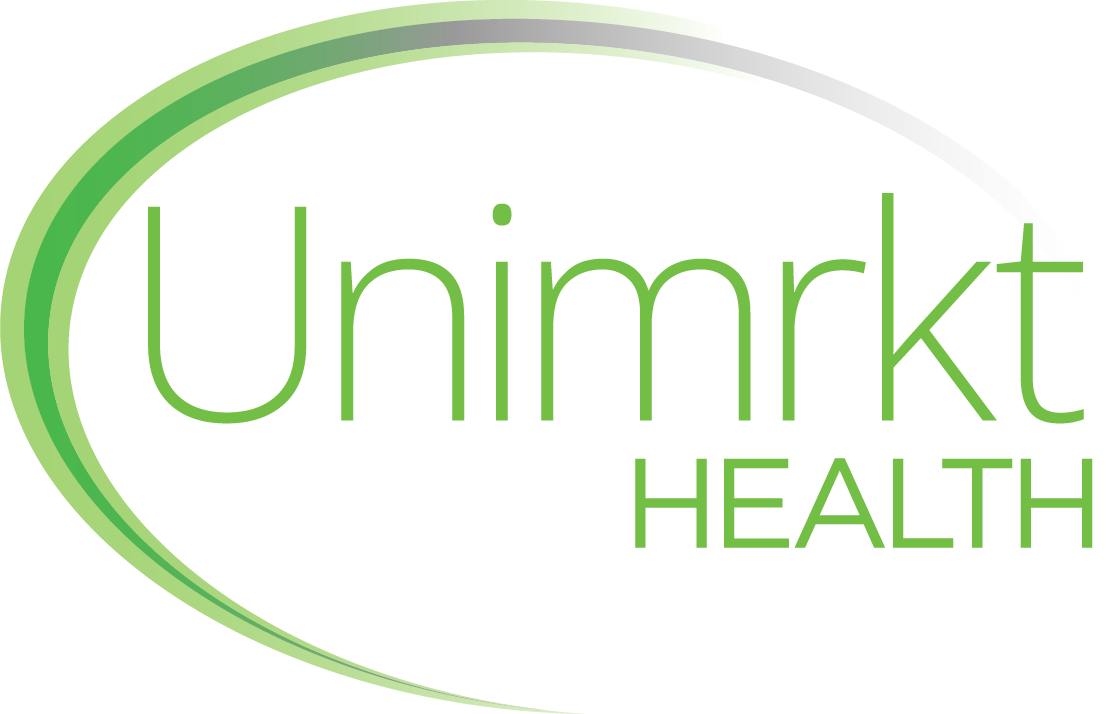How to Use Market Research to Identify and Position Your Business in the Rare Disease Market
- Unimrkt Healthcare » Blog » How to Use Market Research to Identify and Position Your Business in the Rare Disease Market
Rare diseases present a paradox in a rapidly evolving healthcare ecosystem: small patient populations with disproportionately high needs and commercial potential. Though these diseases affect only a limited number of individuals (by definition, fewer than 200,000 people in the U.S.), they collectively impact over 400 million people worldwide. For pharmaceutical and biotech companies, the rare disease market presents a compelling but complex opportunity.
To succeed in this space, businesses must understand the market’s nuances, anticipate risks, and craft strategies rooted in real-world market information. This is where rare disease market research becomes indispensable. By leveraging in-depth data, companies can identify unmet needs, assess feasibility, optimize go-to-market strategies, and deliver high-impact innovation.
Understanding the Rare Disease Market: Products and Services Landscape
The rare disease market covers a wide spectrum of therapies, diagnostics, and support services. While many rare diseases have no approved treatments, the urgent need for care has driven remarkable innovation. Breakthroughs include advanced biologics, gene therapies targeting inherited disorders, enzyme replacement therapies for metabolic conditions, and small molecule drugs tailored to niche indications. Unlike common therapeutic areas, the rare disease space is often propelled by precision medicine and a high degree of patient advocacy, which shapes the direction of research and funding.
This market is fundamentally different from other healthcare domains like animal health research in several ways:
- Patient Volume and Commercial Viability: Rare diseases affect a very small number of patients globally, which limits the scale of clinical trials and commercial outreach. In contrast, health research for other sectors addresses large populations.
- Diagnosis and Awareness: Rare diseases often go undiagnosed for years due to the lack of awareness among clinicians and the general public. Medical research benefits from more established diagnostic protocols and screening programs.
- Regulatory Frameworks and Incentives: Rare disease drugs are often eligible for orphan drug designation, offering regulatory incentives like market exclusivity and tax credits. These frameworks differ significantly from those of other health products, which face different approval pathways, timelines, and pricing models.
- Stakeholder Involvement: Rare disease development is influenced by physicians, academic researchers, healthcare providers, and even advocacy groups. However, reaching these groups is often restricted by research regulatory bodies, necessitating engagement through professional networks.
- Data Scarcity vs. Data Abundance: In rare diseases, limited patient numbers mean clinical and real-world data is often scarce, requiring tailored research methodologies and reliance on qualitative data. Other healthcare markets benefit from more robust datasets, established patient or animal registries, and extensive longitudinal studies.
These distinctions underscore the need for specialized market research approaches in each field. Rare disease market research must be nuanced, empathetic, and strategically sharp to help businesses navigate its many complexities and opportunities.
Key products and services include:
- Specialized Drugs: Specialized pharmaceutical treatments designed for rare diseases and small patient groups.
- Gene and Cell Therapies: Cutting-edge interventions for genetic disorders.
- Enzyme Replacement Therapies: Targeted treatments for metabolic conditions.
- Diagnostic Tools: Genetic testing, biomarker identification, and early screening tools.
- Support Services: Patient navigation programs, specialty pharmacies, and advocacy-driven support platforms.
Beyond these, rare disease markets often require unique service models including tailored access programs, educational content, and personalized adherence initiatives.
Unique Characteristics and Risks in the Rare Disease Market
Operating in the rare disease space requires a different mindset than mainstream therapeutic categories. Companies must navigate high scientific complexity, operational challenges, and ethical considerations.
- High Unmet Needs
Most rare diseases are chronic, progressive, and disabling, yet less than 10% have an approved treatment. This creates both urgency and opportunity.
- Limited Customer Base
With such small patient populations, traditional commercial models rarely apply. Every customer interaction must be high-touch and high-value.
- Fewer SKUs
Product portfolios are typically narrow, focusing on one or two indications. This limits cross-sell opportunities and demands a deeper focus on niche segments.
- Challenges in Diagnosis
On average, rare disease patients face diagnostic delays of 5–7 years. Many are misdiagnosed multiple times, complicating both market size estimation and patient acquisition.
- Affordability and Access Issues
The high cost of research and low prevalence drive up treatment prices, often leading to reimbursement barriers, limited availability, and public scrutiny.
- Regulatory and Ethical Complexity
Though agencies like the FDA and EMA offer incentives through orphan drug designations, approval standards remain stringent, and trial design must balance ethics with evidence generation.
How Market Research Can Be Leveraged for Rare Disease Market Dominance
With so many variables in play, medical and healthcare market research is a strategic imperative. Companies that make evidence-based decisions outperform those relying on assumptions. Here’s how tailored research solutions empower businesses in the rare disease domain:
- Patient Identification and Acquisition
Through qualitative and quantitative methodologies (including CATI in healthcare (Computer-Assisted Telephone Interviewing) research firms can uncover where patients are, how they are diagnosed, and what their journey looks like. Mapping referral pathways, diagnostic patterns, and regional variations aids in effective targeting.
- Defining Product Value and Positioning
Value isn’t only about clinical efficacy, it’s about life impact, caregiver burden, and system savings. Market research helps quantify these parameters, supporting health economics modeling and pricing strategies.
- KOL and HCP Engagement Insights
Rare disease specialists, key opinion leaders (KOLs), and healthcare providers play an outsized role in treatment decisions. Research can reveal their expectations, prescribing behaviors, and perceptions of existing solutions.
- Competitive Intelligence
Understanding the pipeline, market share, and strategic focus of other players informs positioning. Market research provides early warning on upcoming launches, clinical trial pivots, and regional moves.
- Patient-Centric Product Development
Incorporating voice-of-the-patient panels ensures your product addresses real pain points, whether it’s mode of delivery, dosing frequency, or quality-of-life factors. This improves trial recruitment, product usability, and long-term adherence.
- Access, Reimbursement, and Payer Research
Identify which payers are covering what, under which criteria, and why. Explore how stakeholders evaluate value, and identify the key drivers behind successful market access strategies.
- Real-World Evidence Collection
In low-prevalence populations, post-launch data is vital. Market research methodologies can be used to track outcomes, patient satisfaction, and therapy persistence.
Why You Should Hire a Medical and Healthcare Market Research Firm
Rare disease markets are unlike any other. They require a blend of empathy, scientific precision, and commercial acumen. Navigating this complexity without an experienced research partner can lead to missteps, missed opportunities, and unmet expectations.
By partnering with a specialized medical and healthcare market research firm, you gain:
- Access to patient communities and expert panels
- Deep knowledge of disease-specific metrics and definitions
- Customized methodologies including CATI, IDIs, online surveys, and in-depth ethnographic research
- Global reach and regulatory expertise
- Cross-sector market data in rare disease, oncology, and animal health care industry trends (as per your research needs)
Partner with Unimrkt Healthcare for Strategic Success
The rare disease market offers immense potential, but only to those who are prepared to truly understand it. With the right research partner, companies can uncover patient needs, predict market trends, and build strategies that not only deliver commercial success but also life-changing value to some of the world’s most underserved patients. At Unimrkt Healthcare, we have a proven track record of delivering high-impact market research solutions across the healthcare spectrum. Our experience in rare disease market research, animal health market research, oncology market research, and emerging therapeutic areas enables clients to make informed, patient-focused, and strategic decisions.
We work with pharmaceutical companies, biotech startups, CROs, medical device firms, and healthcare innovators across the globe. Whether you’re entering a new market or refining your product positioning, our team provides rich and relevant market data to help you grow your business with confidence. If you’re ready to elevate your impact in the rare disease or animal healthcare market, contact Unimrkt Healthcare today. Call +91-124-424-5210, +91-9870-377-557, or email sales@unimrkthealth.com. You can also fill out our contact form, and our team of experts will connect with you promptly.
Frequently Asked Questions
Q. What is rare disease market research, and why is it important?
Rare disease market research focuses on understanding the small, underserved patient populations affected by rare conditions. It helps companies identify unmet needs, navigate regulatory complexities, and develop effective commercial strategies.
Q. What are the examples of rare diseases?
Rare diseases are conditions that affect a small percentage of the population, often with a limited number of diagnosed cases worldwide. Examples include Cystic Fibrosis, Duchenne Muscular Dystrophy, Alagille Syndrome, and various Lysosomal Storage Disorders like Mucopolysaccharoidosis (MPS) type I.
Q. Which type of businesses are interested in rare disease market research?
Pharmaceutical companies, biotech companies, diagnostic companies, and market research firms specializing in healthcare and pharmaceuticals are some of the businesses interested in rare disease market research.
Q. How is rare disease market research similar to oncology research?
Both rare disease and oncology research involve similar stakeholders, including physicians, researchers, and healthcare providers. Additionally, both areas face challenges related to small patient populations, with some rare cancers also being eligible for orphan drug designation due to their limited target groups. While the patient demographics may differ, the research dynamics and regulatory considerations often overlap between rare diseases and oncology.
Q. What role does CATI play in healthcare market research?
CATI (Computer-Assisted Telephone Interviewing) enables researchers to gather in-depth insights from hard-to-reach groups like physicians, KOLs, or caregivers, especially in rare and sensitive healthcare topics.
Q. What are the other types of research techniques that can be used in rare disease market research?
Other than CATI, rare disease market research can use methods like In-depth interviews (IDIs), Online Surveys, Ethnographic Research, Focus Groups, and Patient Journey Mapping. These techniques provide both qualitative and quantitative market data on patient needs, experiences, and treatment gaps.
Q. Which research design is best for investigating the rare disease market?
A mixed-method research design is best for investigating the rare disease market, combining qualitative methods (like in-depth interviews and ethnography) to understand patient experiences with quantitative approaches (like surveys) to validate trends and measure market potential.
Q. How can market research improve product positioning in rare diseases?
By capturing patient and HCP perspectives, research helps define the product’s real-world value, guide pricing strategies, and support payer communications.
Q. What are the challenges of conducting market research in the rare disease market?
Low prevalence, diagnostic delays, limited datasets, and patient access make rare disease research more complex than traditional therapeutic areas.
Q. Does rare disease market research help with regulatory and access planning?
Yes, healthcare market research supports reimbursement strategy, identifies payer criteria, and collects real-world data needed for post-approval success.
Q. Why choose Unimrkt Healthcare for rare disease market research?
Unimrkt Healthcare offers deep expertise in the rare disease industry and offers tailored methodologies, global reach, and patient-focused market data.
Recent Posts
- Precision Insights for Precision Medicine: Market Research to Drive Personalized Healthcare
- The Sales Head: Conducting Research with Star KOLs in the Pharmaceutical Industry
- Business Research Methodologies in Healthcare: 7 Desk-Based Approaches That Work
- Data-Driven Decisions: How Healthcare Technology Empowers Payers for Best Outcomes
- Human-Led Primary Research in the UK: The Case for CATI
Archives
- October 2025
- September 2025
- August 2025
- July 2025
- June 2025
- May 2025
- April 2025
- March 2025
- February 2025
- January 2025
- December 2024
- November 2024
- October 2024
- September 2024
- August 2024
- July 2024
- June 2024
- May 2024
- April 2024
- March 2024
- February 2024
- January 2024
- December 2023
- November 2023
- October 2023
- September 2023
- August 2023
- July 2023
- June 2023
- May 2023
- April 2023
- March 2023
- February 2023
- January 2023
- December 2022
- November 2022
- October 2022
- September 2022
- August 2022
- July 2022
- June 2022
- May 2022
Quick Enquiry
Customer Service, We Make it Better
Related Posts:
Let's Connect
Please, fill in the form to get in touch!



